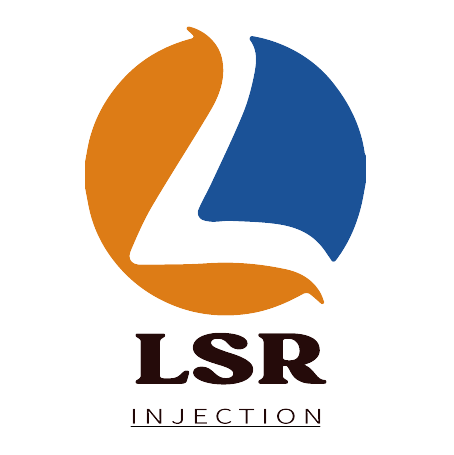Silicone catheters offer exceptional biocompatibility, flexibility, and durability, making them ideal for medical applications. Producing a silicone catheter involves careful preparation, selecting high-quality medical-grade silicone, meticulous molding, curing, trimming, inspection, and packaging processes. Attention to detail throughout the manufacturing ensures patient safety and catheter effectiveness.
Introduction to Silicone Catheters
Silicone catheters are medical devices designed to drain bodily fluids or administer medication directly into the body. They are highly valued for their biocompatibility, durability, resistance to bacterial colonization, and flexibility, making them preferable over other materials like latex for long-term catheterization.
This article provides an in-depth, step-by-step guide on manufacturing silicone catheters, focusing on clarity and ease of understanding while maintaining professional accuracy.
Step-by-Step Guide to Making Silicone Catheters
1. Material Selection
Choosing the right type of silicone is crucial. Medical-grade silicone, specifically platinum-cured silicone, is preferred due to its purity, stability, and minimal reactivity. It prevents adverse patient reactions and reduces long-term risks.
Key characteristics of medical-grade silicone include:
- Biocompatibility
- Resistance to extreme temperatures
- Chemical inertness
- Flexibility and softness
2. Design Considerations
Designing the catheter involves specifying its diameter, length, flexibility, and additional features like drainage eyes and balloon inflation channels. The design should be patient-centric, ensuring comfort and ease of use.
Important design factors:
- Catheter type (e.g., Foley, intermittent, suprapubic)
- Catheter size (diameter measured in French units)
- Number and placement of drainage eyes
- Balloon size and inflation channel
3. Preparing the Silicone Mixture
Medical-grade silicone is typically supplied in two components: silicone base and curing agent (catalyst). Mixing these accurately is vital to achieve correct curing properties.
- Measure precise ratios recommended by silicone manufacturer (usually 1:1 ratio).
- Mix thoroughly to ensure uniform consistency, eliminating air bubbles, which can compromise catheter integrity.
- Degas the mixture under vacuum conditions to remove trapped air, enhancing product quality.
4. Molding Process
Injection molding or extrusion processes are commonly used to manufacture silicone catheters:
- Injection molding involves injecting silicone mixture into precision-made molds. It is ideal for complex designs, such as Foley catheters with integrated balloons.
- Extrusion is suitable for simpler, straight-tube catheters. Silicone mixture is forced through an extrusion die, shaping it into the desired catheter dimensions.
Key points during molding:
- Ensure molds and dies are meticulously cleaned and sterilized.
- Control mold temperature and injection pressure to prevent defects.
5. Curing Process
Curing transforms the silicone from a viscous state into a durable, elastic solid. Silicone catheters typically undergo heat curing, using ovens or specialized curing chambers.
- Heat cure the silicone at controlled temperatures (usually 120°C – 200°C).
- Maintain precise curing times as recommended (typically 30 minutes to several hours).
Proper curing ensures:
- Optimal strength
- Elasticity
- Resistance to deformation
6. Trimming and Finishing
After curing, catheters undergo trimming and finishing processes:
- Trim catheter ends accurately to prevent sharp edges.
- Smooth or bevel catheter tips for patient comfort and ease of insertion.
- Cut drainage eyes using precision tools, ensuring smooth edges and uniform size.
Quality checks during trimming:
- Use magnification tools for accuracy.
- Inspect carefully to eliminate defects.
7. Quality Inspection
Rigorous quality inspections are mandatory for medical-grade products. Inspect each catheter to ensure:
- Consistent dimensions
- Smoothness and absence of defects
- Correct drainage eye placement and size
- Balloon functionality (for Foley catheters)
Methods include:
- Visual inspection
- Functional tests, including balloon inflation and deflation
- Dimensional measurement using calibrated equipment
8. Sterilization and Packaging
Sterilization is crucial to ensure patient safety and prevent infections:
- Common sterilization methods include ethylene oxide gas sterilization, gamma radiation, or autoclaving.
- Verify sterilization effectiveness using biological indicators.
Packaging must protect sterility:
- Use sterile, sealed packages with clear labeling, including batch numbers and expiry dates.
- Implement tamper-evident seals to ensure package integrity.
9. Regulatory Compliance
Compliance with international standards and regulations (e.g., FDA, ISO 13485) is critical:
- Ensure production environment cleanliness.
- Maintain detailed documentation for traceability.
- Conduct regular audits and staff training to maintain quality standards.
Advantages of Silicone Catheters
Silicone catheters offer numerous benefits over other materials:
- Exceptional biocompatibility reduces the risk of allergies.
- Reduced biofilm formation limits infections.
- Durability and flexibility enhance patient comfort.
Challenges in Silicone Catheter Manufacturing
Despite their advantages, silicone catheter production can face challenges:
- Ensuring uniform curing throughout thicker catheter sections.
- Maintaining precision during molding and trimming.
- High initial costs due to specialized equipment and processes.
Conclusion
Producing silicone catheters involves careful selection of materials, meticulous process control, and stringent quality inspections. Properly manufactured silicone catheters significantly improve patient outcomes and provide a safer, more comfortable healthcare experience. Maintaining high standards throughout the manufacturing process ensures that silicone catheters remain reliable, effective, and safe for medical use.

